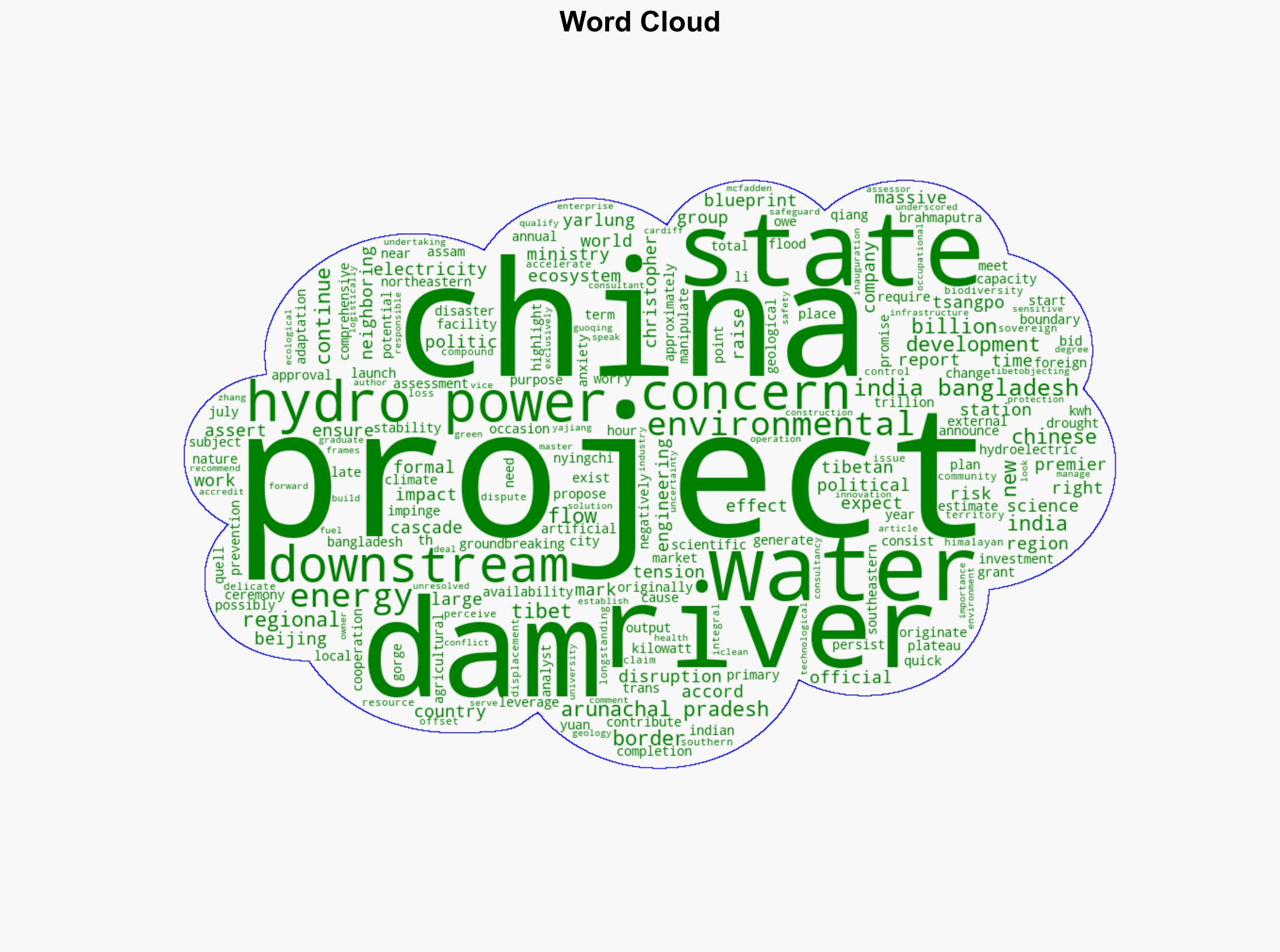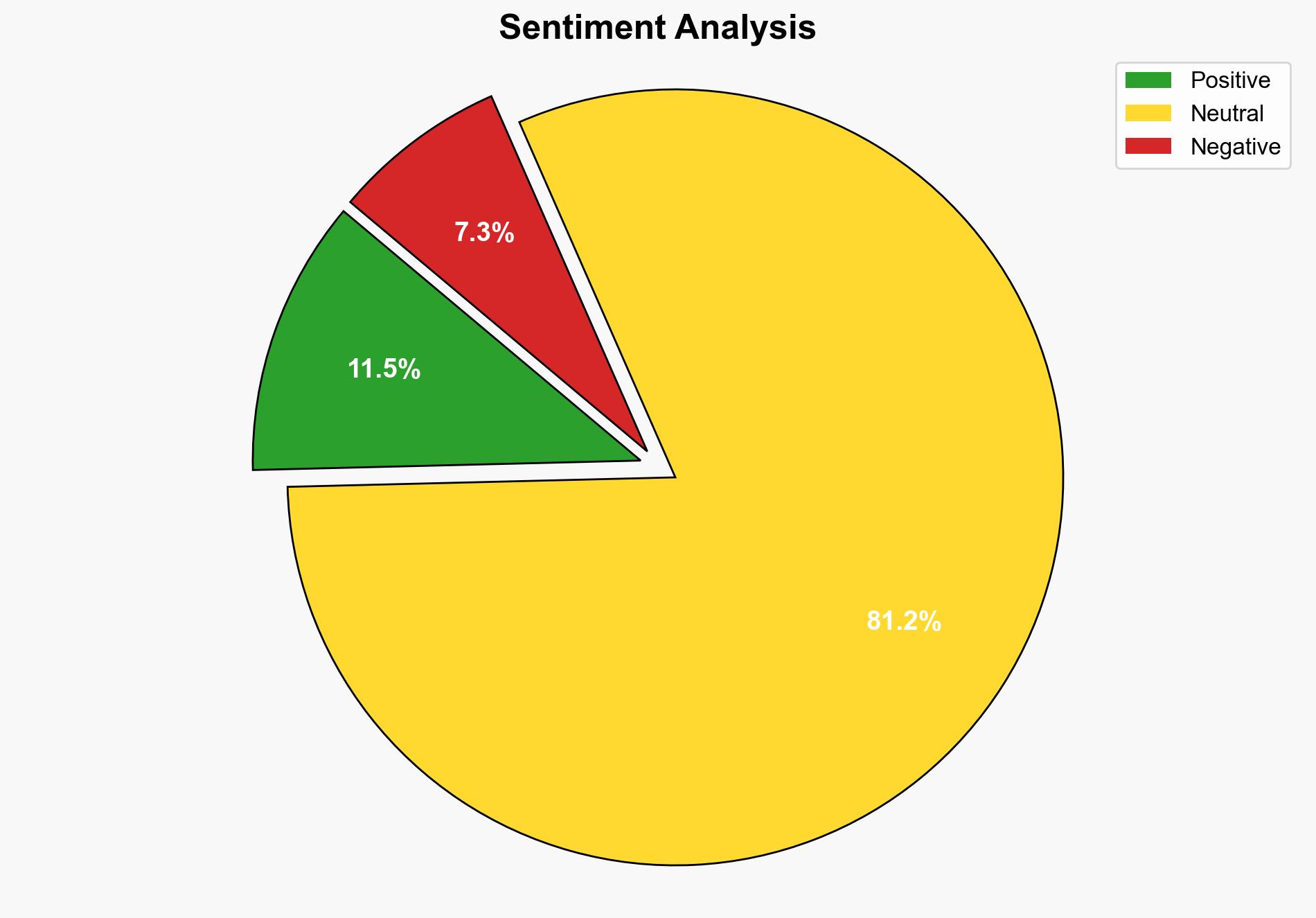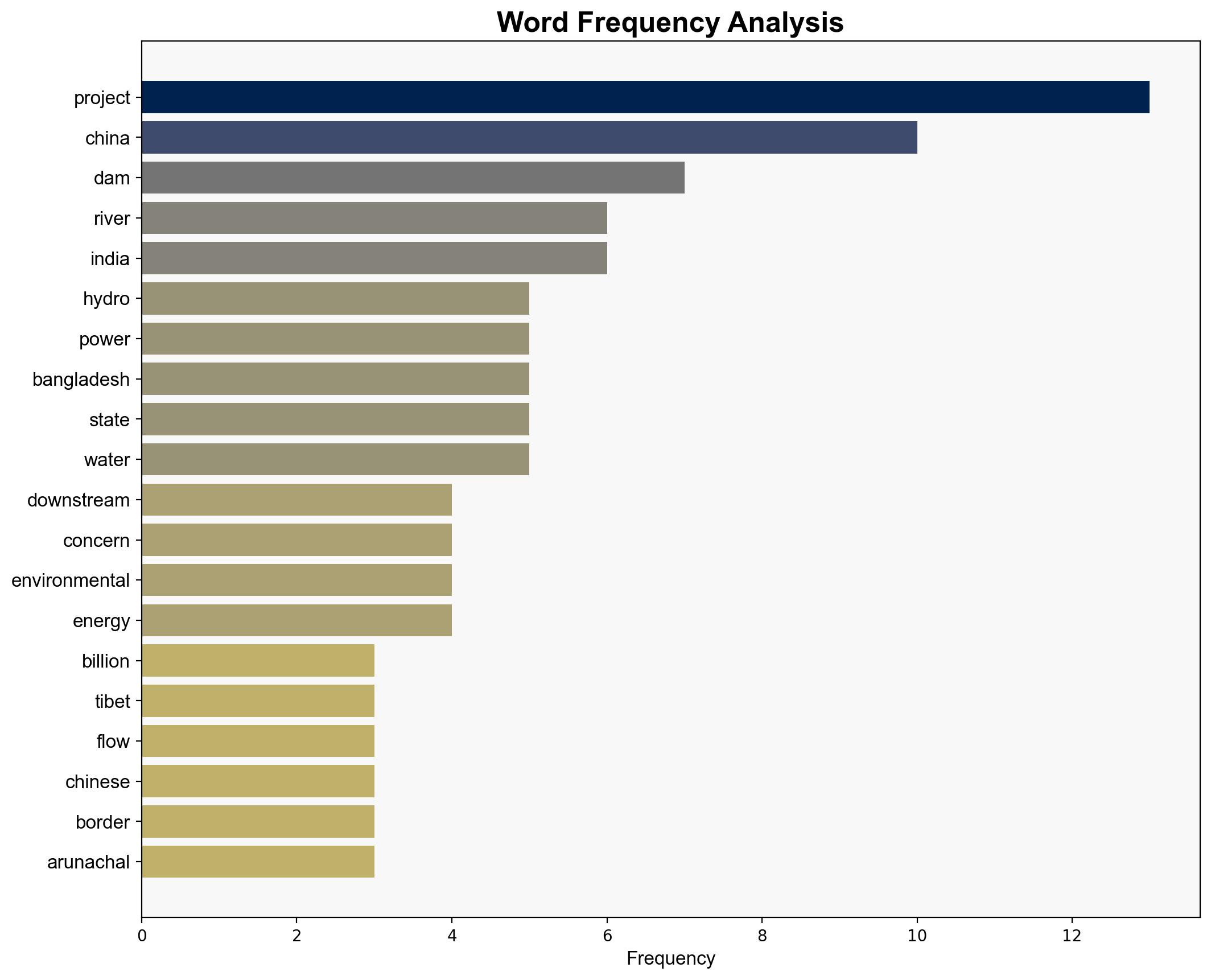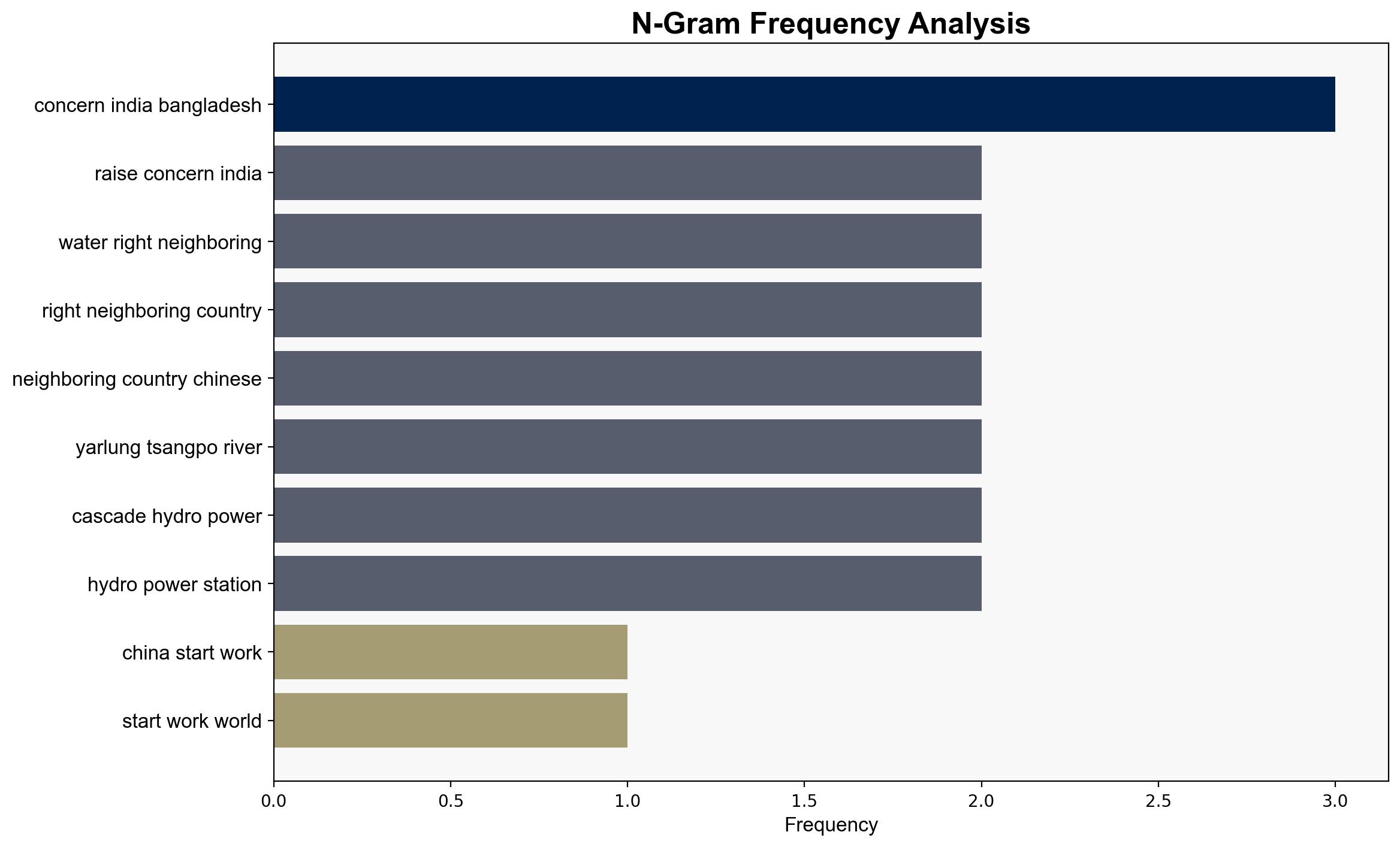China starts work on worlds largest 300 billion kWh hydro-power dam in Tibet – Interesting Engineering
Published on: 2025-07-20
Intelligence Report: China Commences Construction of World’s Largest 300 Billion kWh Hydro-Power Dam in Tibet
1. BLUF (Bottom Line Up Front)
China has initiated the construction of a massive hydroelectric dam on the Yarlung Tsangpo River in Tibet, projected to be the world’s largest with an annual output of 300 billion kWh. This development raises significant geopolitical concerns for India and Bangladesh due to potential impacts on downstream water flow and regional water rights. Strategic recommendations include diplomatic engagement and regional cooperation to address potential environmental and political risks.
2. Detailed Analysis
The following structured analytic techniques have been applied to ensure methodological consistency:
Causal Layered Analysis (CLA)
At the surface level, the dam’s construction represents China’s push for clean energy and regional development. Systemically, it underscores China’s strategic infrastructure expansion in contested regions. The worldview reflects China’s narrative of technological advancement and ecological stewardship. Mythically, it taps into China’s historical ambition for regional dominance.
Cross-Impact Simulation
The dam’s construction could alter water availability, affecting agriculture and ecosystems in India and Bangladesh. Potential manipulation of river flow during political tensions could exacerbate regional conflicts. Economic dependencies may shift as energy dynamics change.
Scenario Generation
Scenarios include:
- Best Case: Regional cooperation leads to shared water management and energy benefits.
- Worst Case: Escalating tensions result in diplomatic standoffs and environmental degradation.
- Most Likely: Incremental adjustments in regional policies with ongoing diplomatic negotiations.
3. Implications and Strategic Risks
The project presents strategic risks including potential for heightened political tensions, environmental degradation, and economic disruptions. The dam could serve as a geopolitical tool for China, influencing regional water politics. Environmental risks include biodiversity loss and displacement of local communities.
4. Recommendations and Outlook
- Engage in multilateral dialogues with China, India, and Bangladesh to establish water-sharing agreements and environmental safeguards.
- Enhance regional monitoring of water flow and ecosystem health to preemptively address potential disruptions.
- Prepare for scenario-based outcomes by developing contingency plans for worst-case scenarios involving diplomatic or environmental crises.
5. Key Individuals and Entities
Li Qiang, Zhang Guoqing, Christopher McFadden
6. Thematic Tags
national security threats, regional stability, environmental impact, geopolitical strategy





